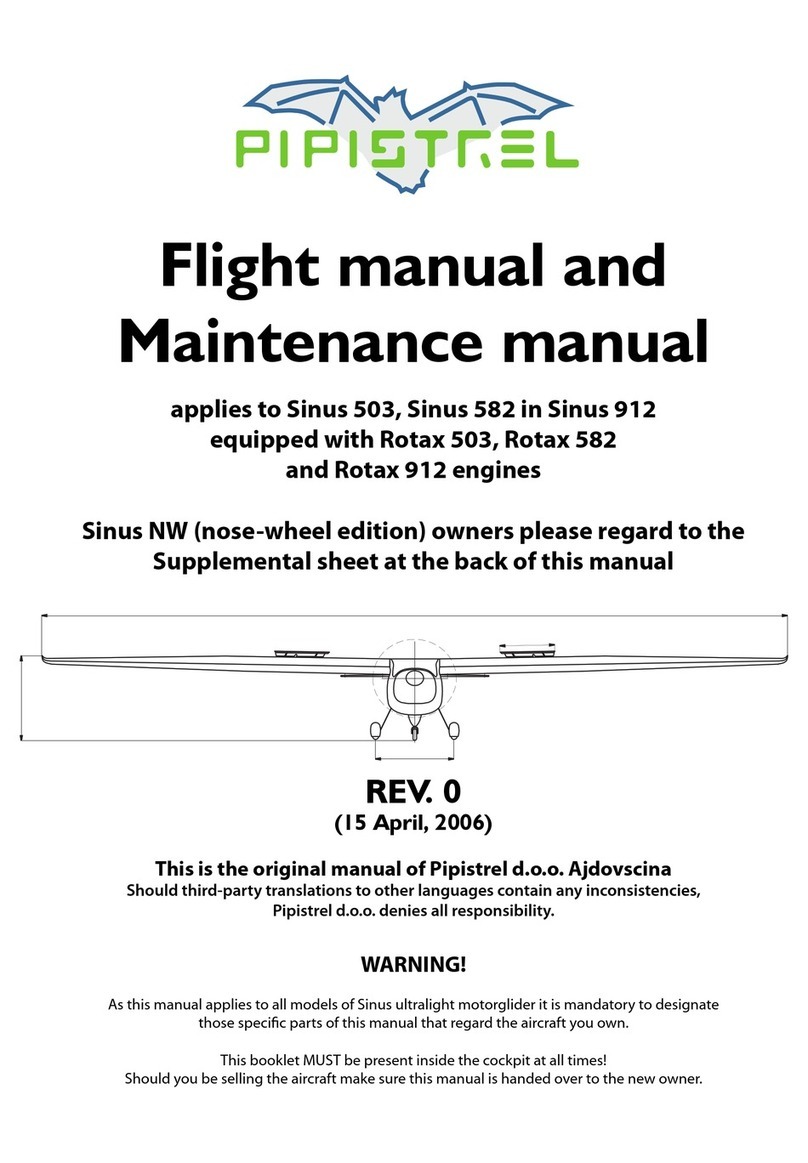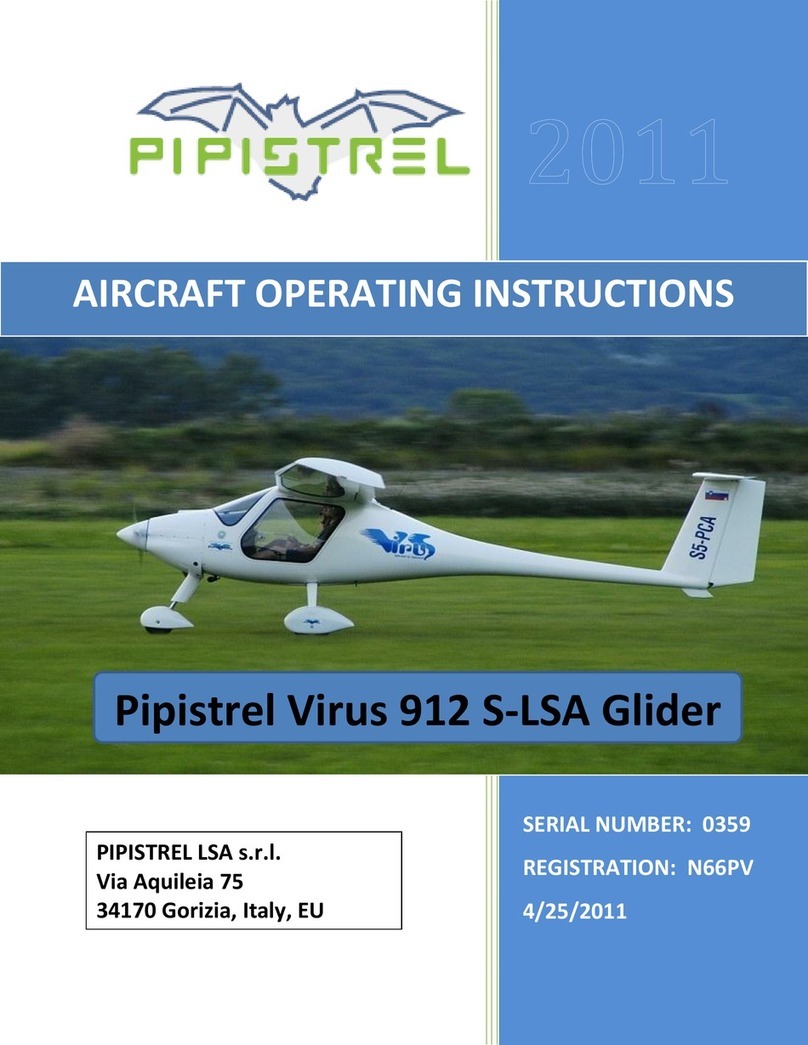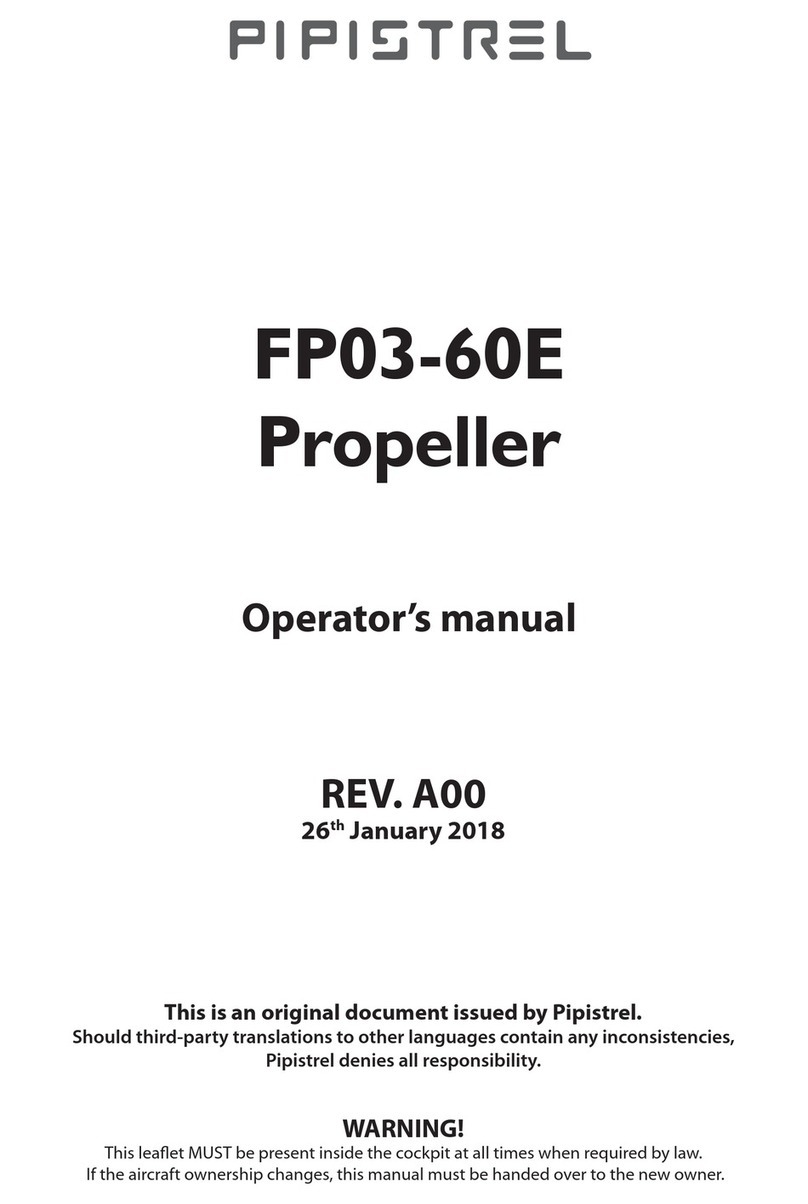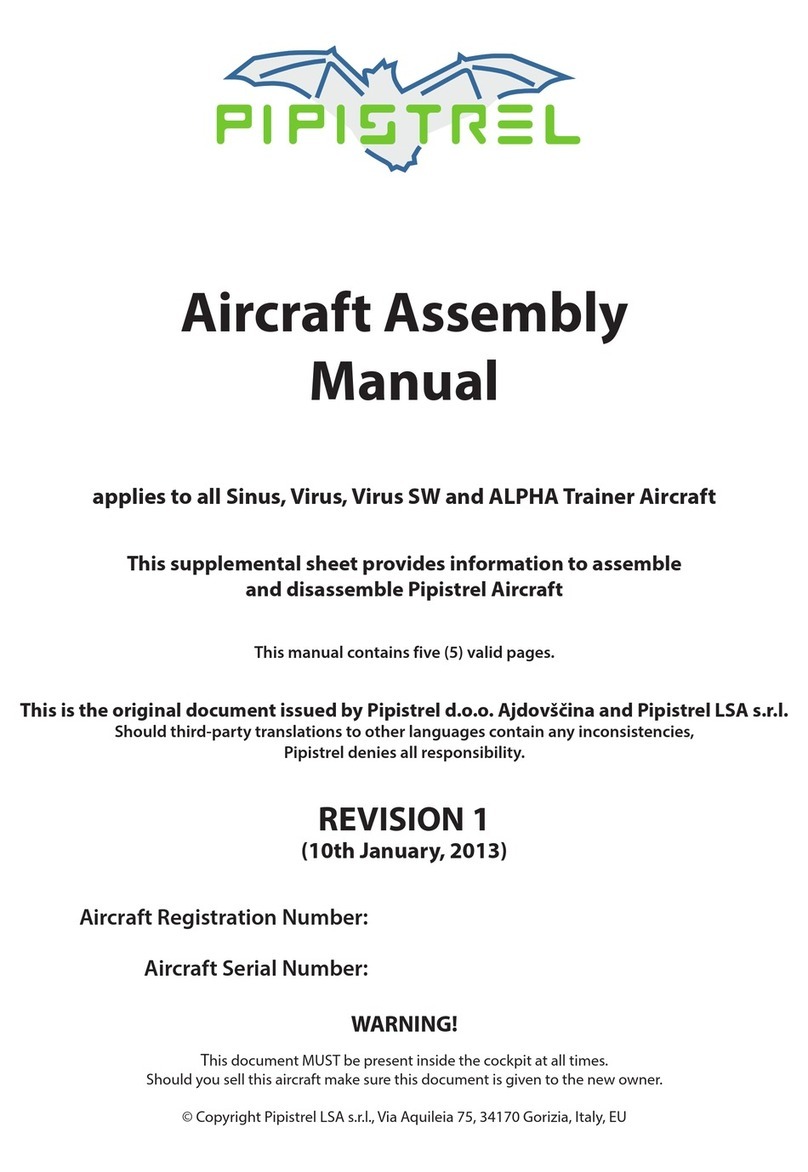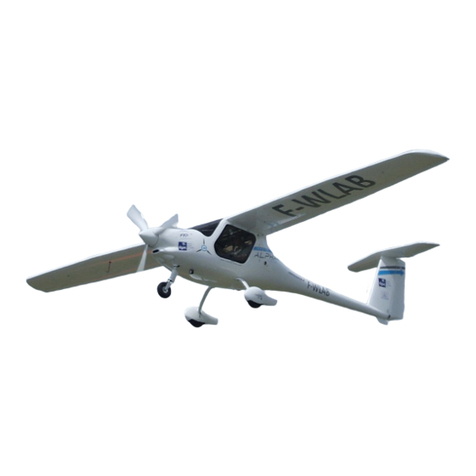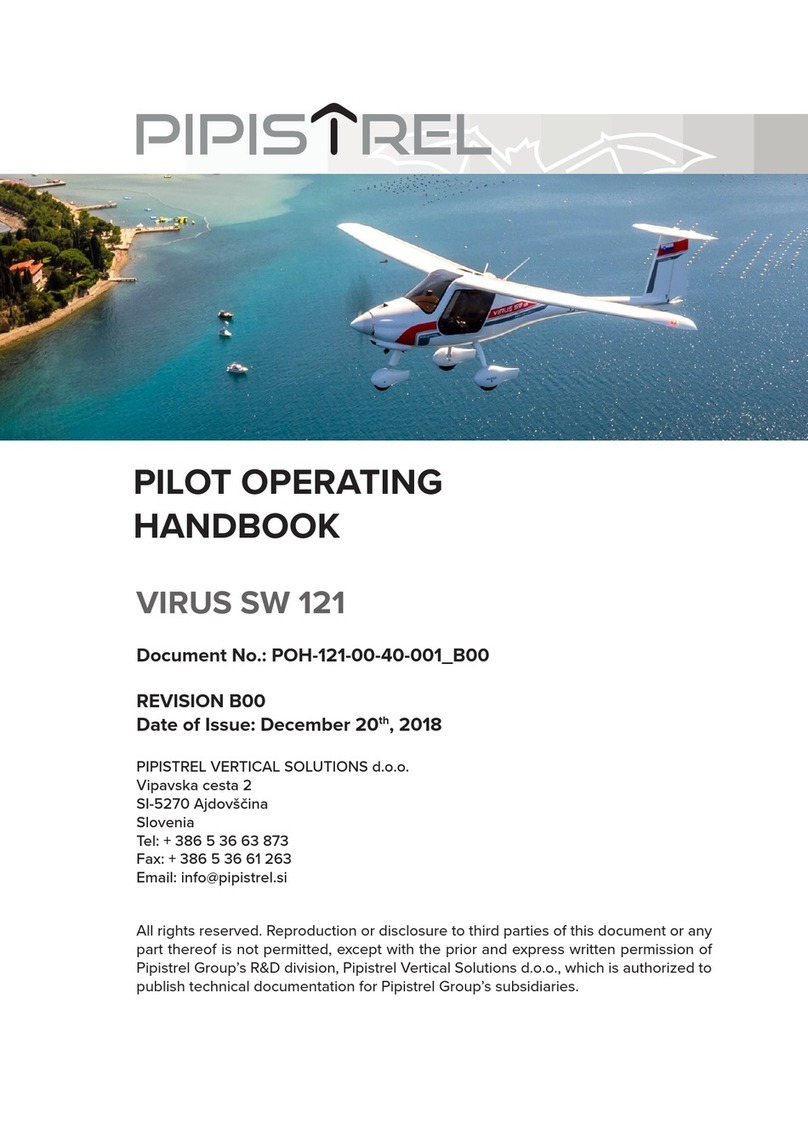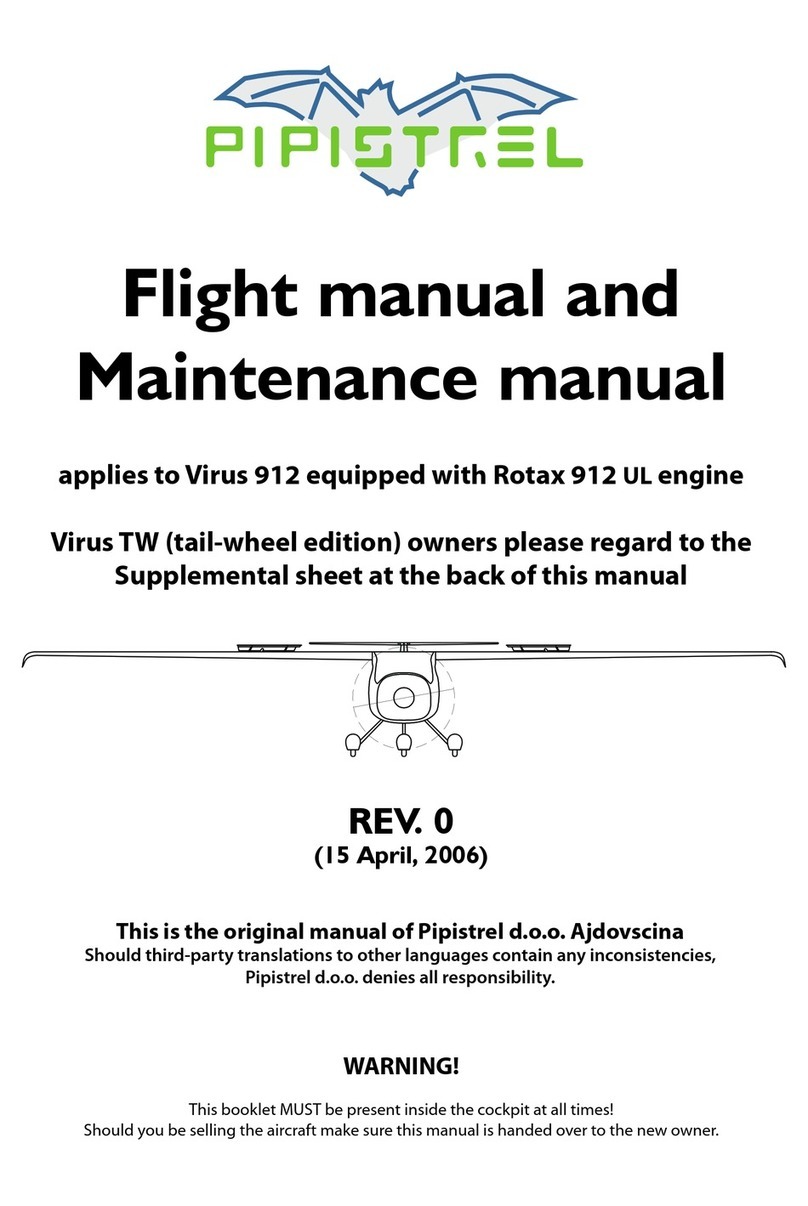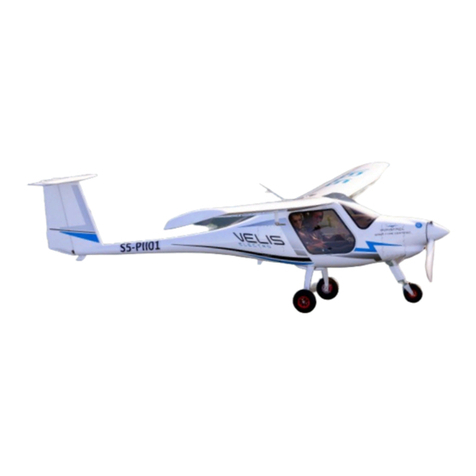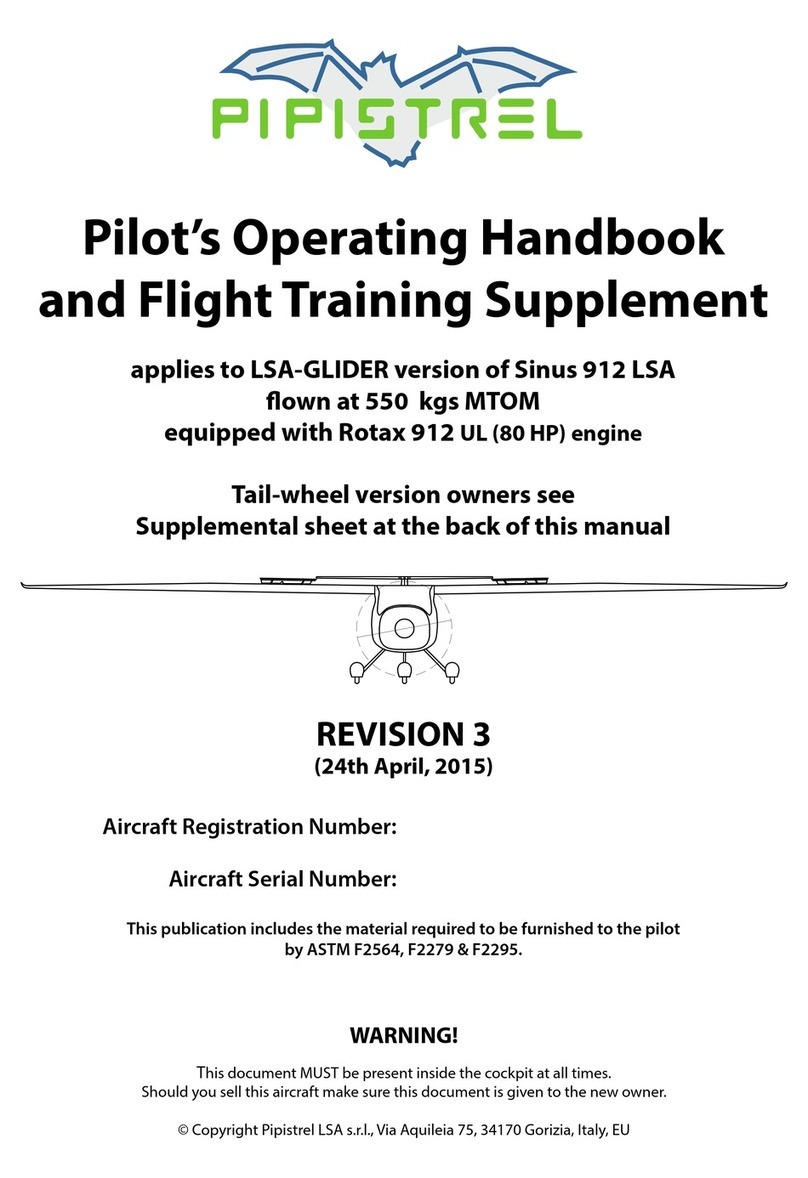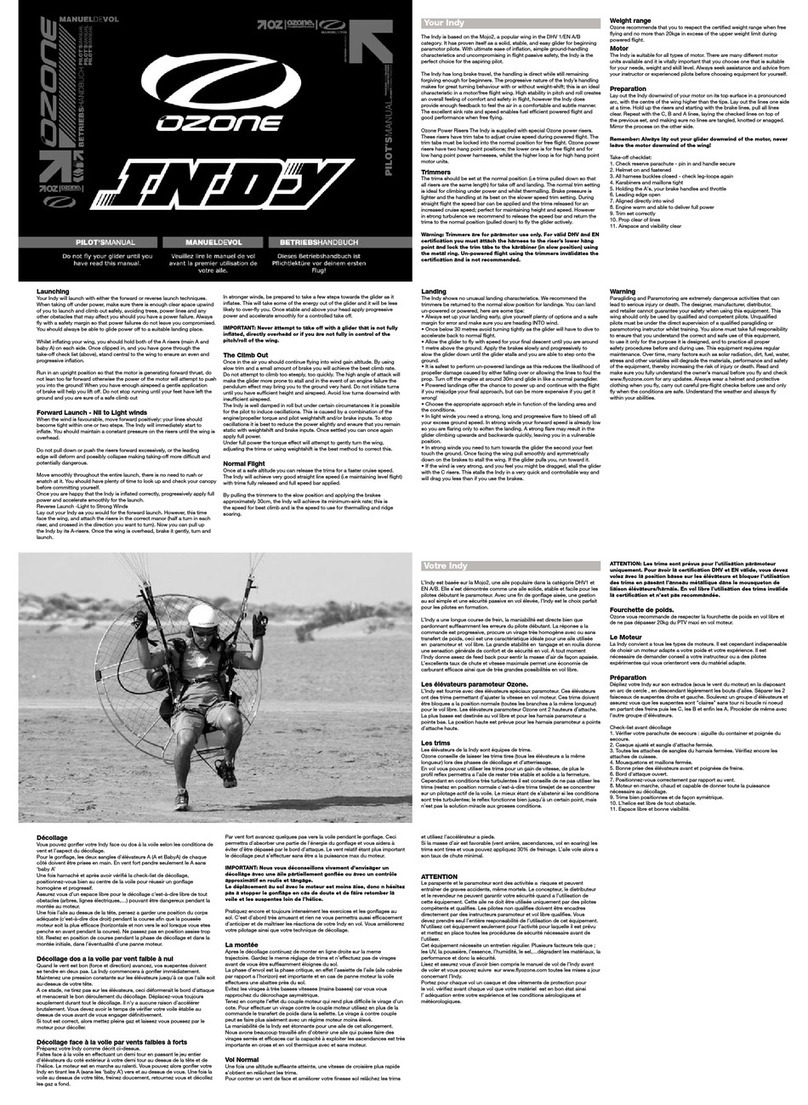
Page 7of 33
Modification 2 – AFT SEAT PAN AND SEAT BACKREST REPAIR
a. Through the hole in the fuselage belly grind/trim 3cm to each side along the crack(s)
in the aft seat pan and on the seat backrest. Grind all the way to the fibre structure
and determine the amount of the damage.
b. Blow surface clean with compressed air, wipe away dust/debris with acetone and
allow to dry for 30 minutes.
c. Inside the cabin and from the baggage compartment create support plates over the
damaged areas. Apply a 3mm airex foam (P/N 5079026) covered with resin non-
stick material (for example heavy duty brown packaging tape). Secure the foam over
the damaged area with firmly applied stretch wrap and with double sided Tesa
adhesive tape shown in Figure 02-001 part 1.
NOTE: In place of airex foam a different 3mm type of PVC foam can be used.
NOTE: Crack extend also to the area where a support plate cannot be satisfyingly applied.
There the repair will have to be run only from one side.
d. To prevent bubbles forming first apply a smaller amount of microbaloons compound
through the hole in the fuselage belly over the support plate on seat pan and on seat
backrest as shown in Figure 02-001 part 2.
e. Prepare some resin and cut the plies of 92125 ((Pipistrel P/N 5071006) 0°/90° and
top layer 1x 92110 (Pipistrel P/N 5071002) 0°/90° so that they extend beyond the
damaged and grinded area by 2 cm.
f. Apply the plies and resin over the cracks and damaged area on the seat pan and on
the seat backrest from the hole in the fuselage belly (Figure 02-001 part 2). Allow to
cure for 8 hours at 56°C.
g. Sand the repair area to make it flush with the rest of the surface (Figure 02-001 part
3).
h. Turn the airplane right side up. Remove the support plate and sand the inside the
cabin and baggage compartment repair surfaces.
i. From inside the cabin and the baggage compartment, apply 1:50 taper to the edges
and sand until whole repair surface (Fuselage edges, microbaloons and inner layers)
are smooth (Figure 02-001 part 3).
j. Blow surface clean with compressed air, wipe away dust/debris with acetone and
allow to dry for 30 minutes.
k. Prepare some resin and according to the damage on the airplane bottom, cut the
plies according to the repair laminate plan.
